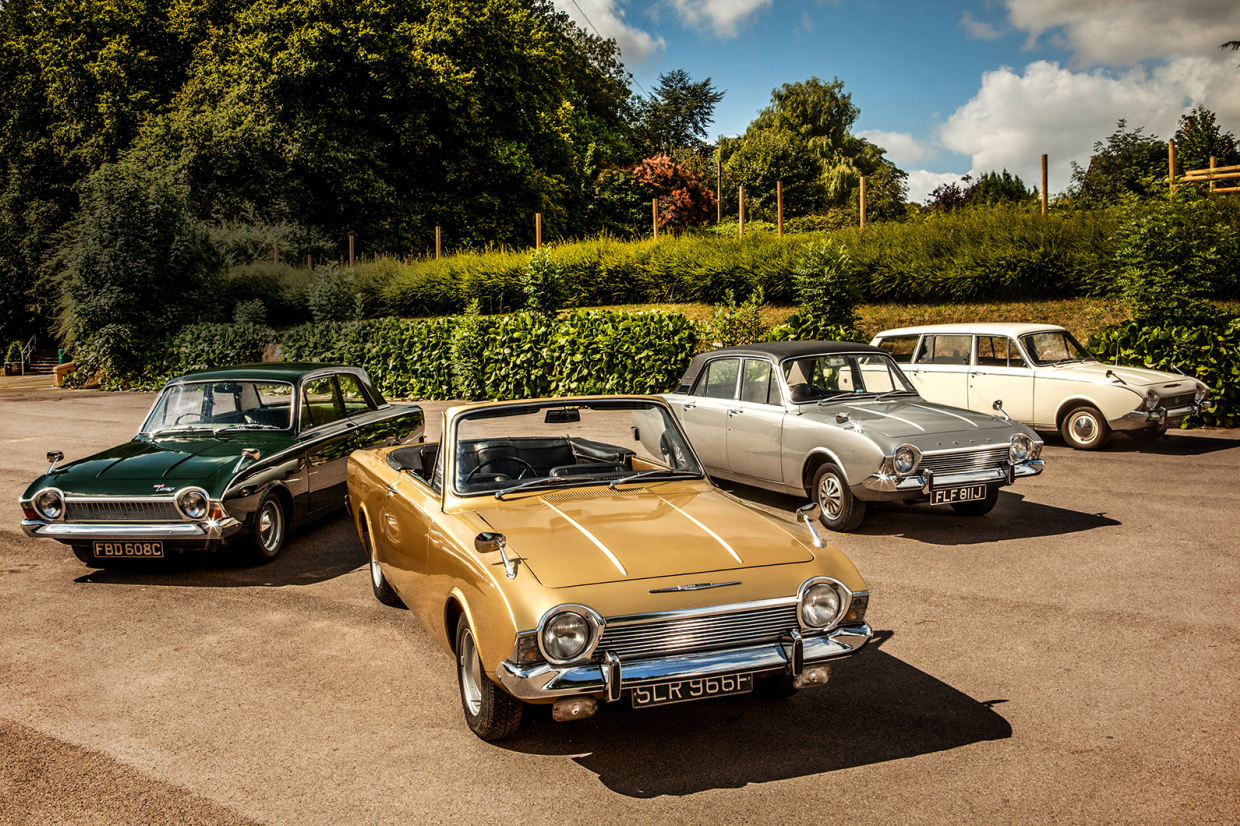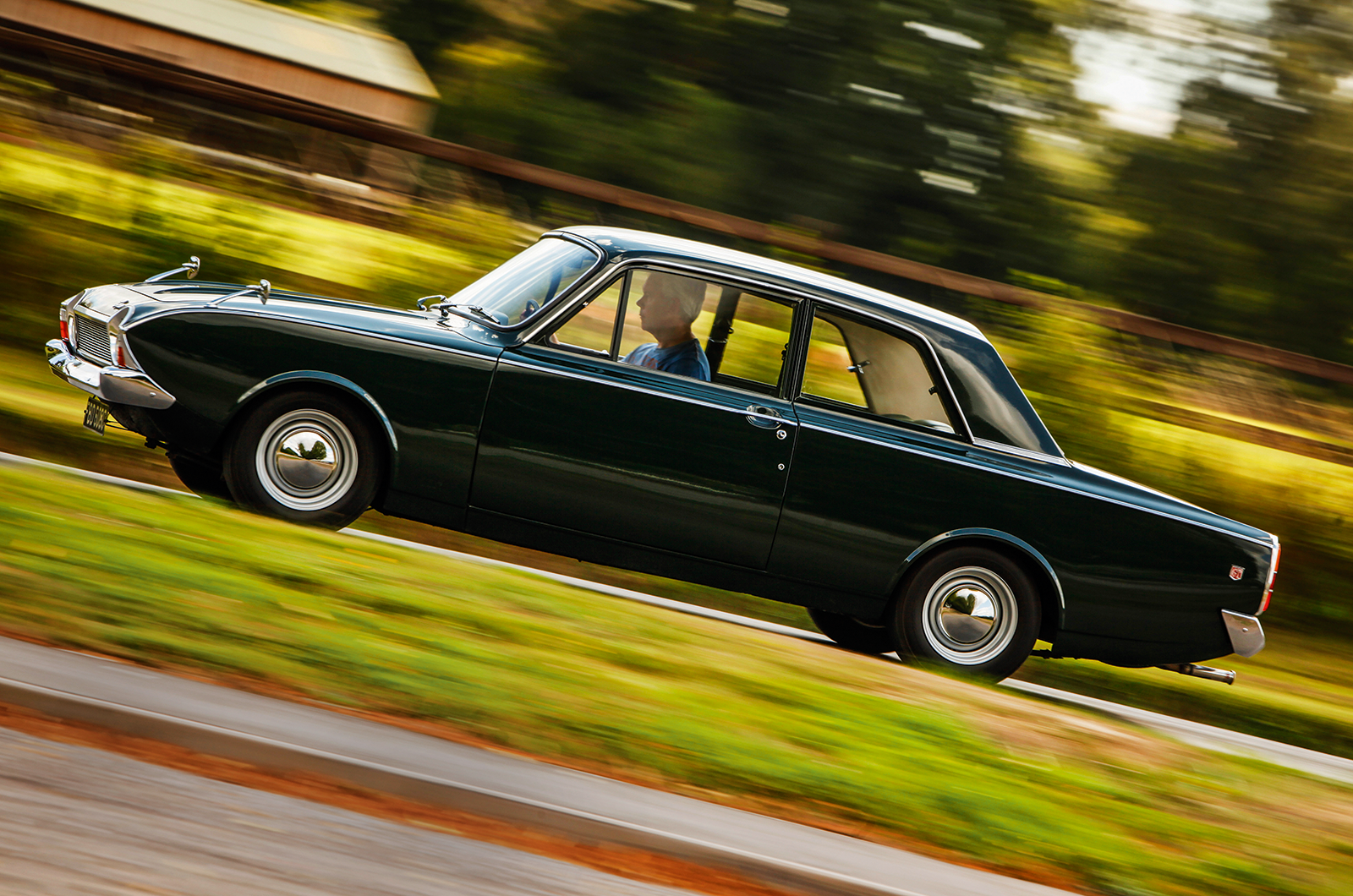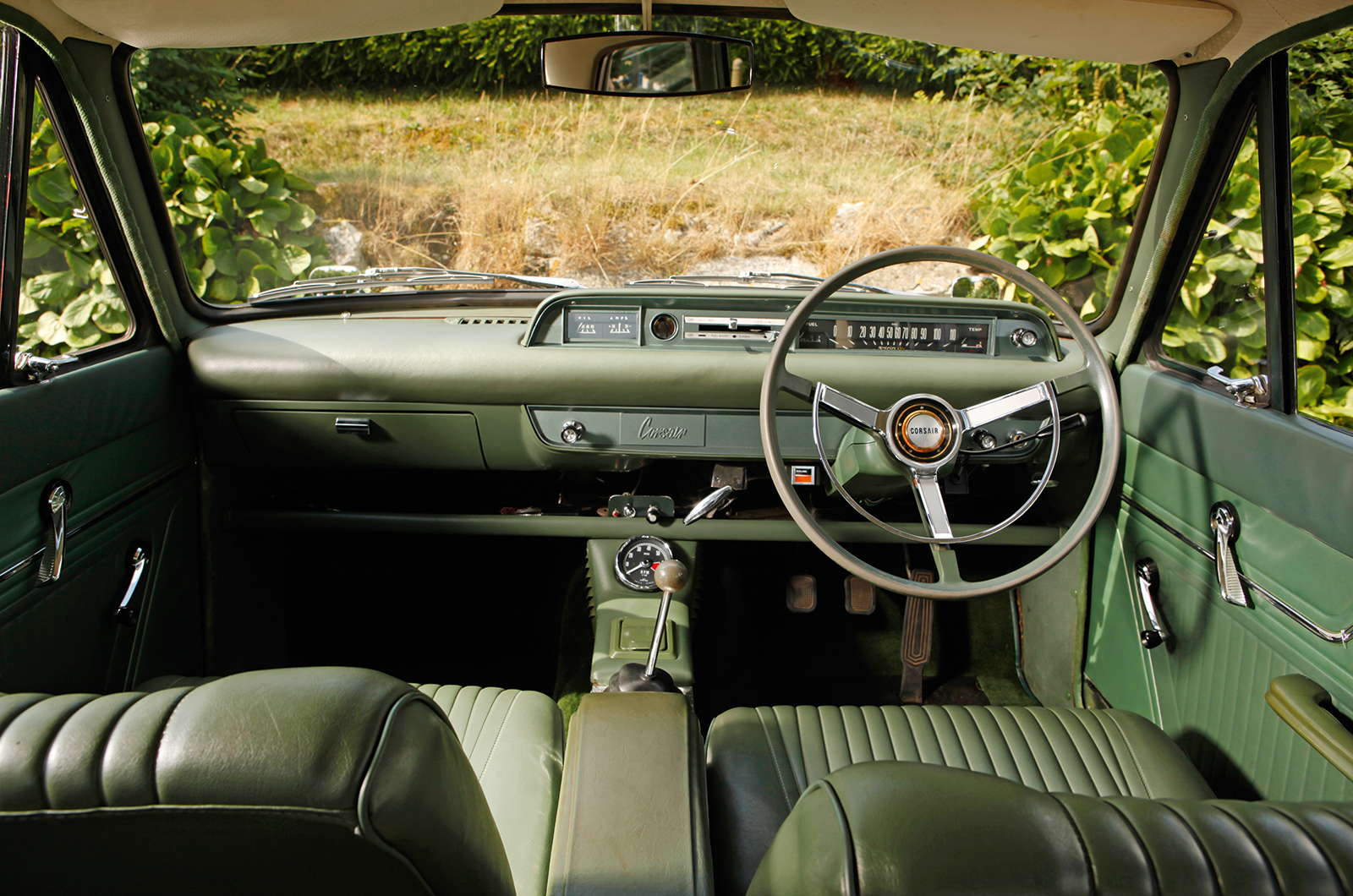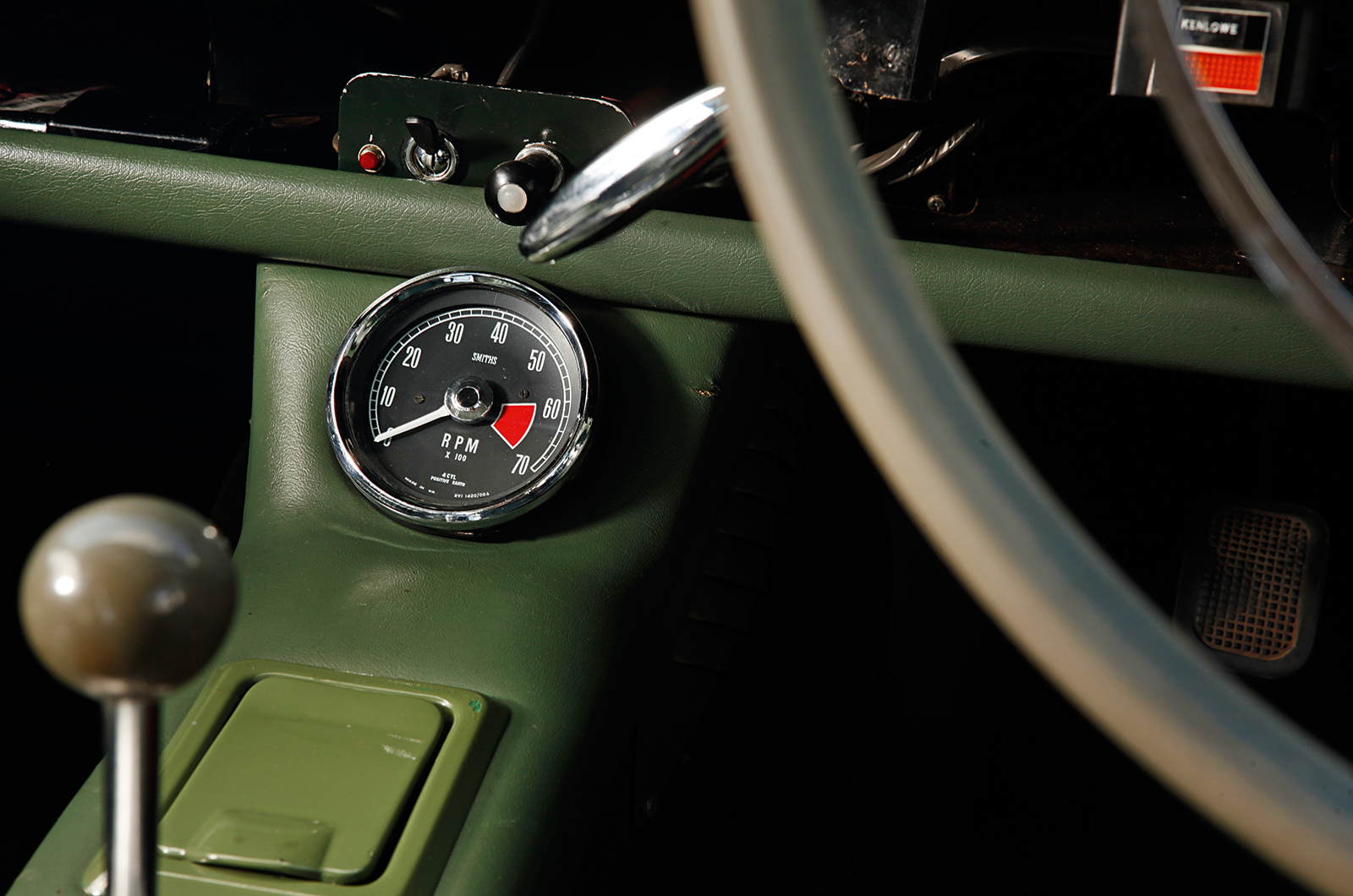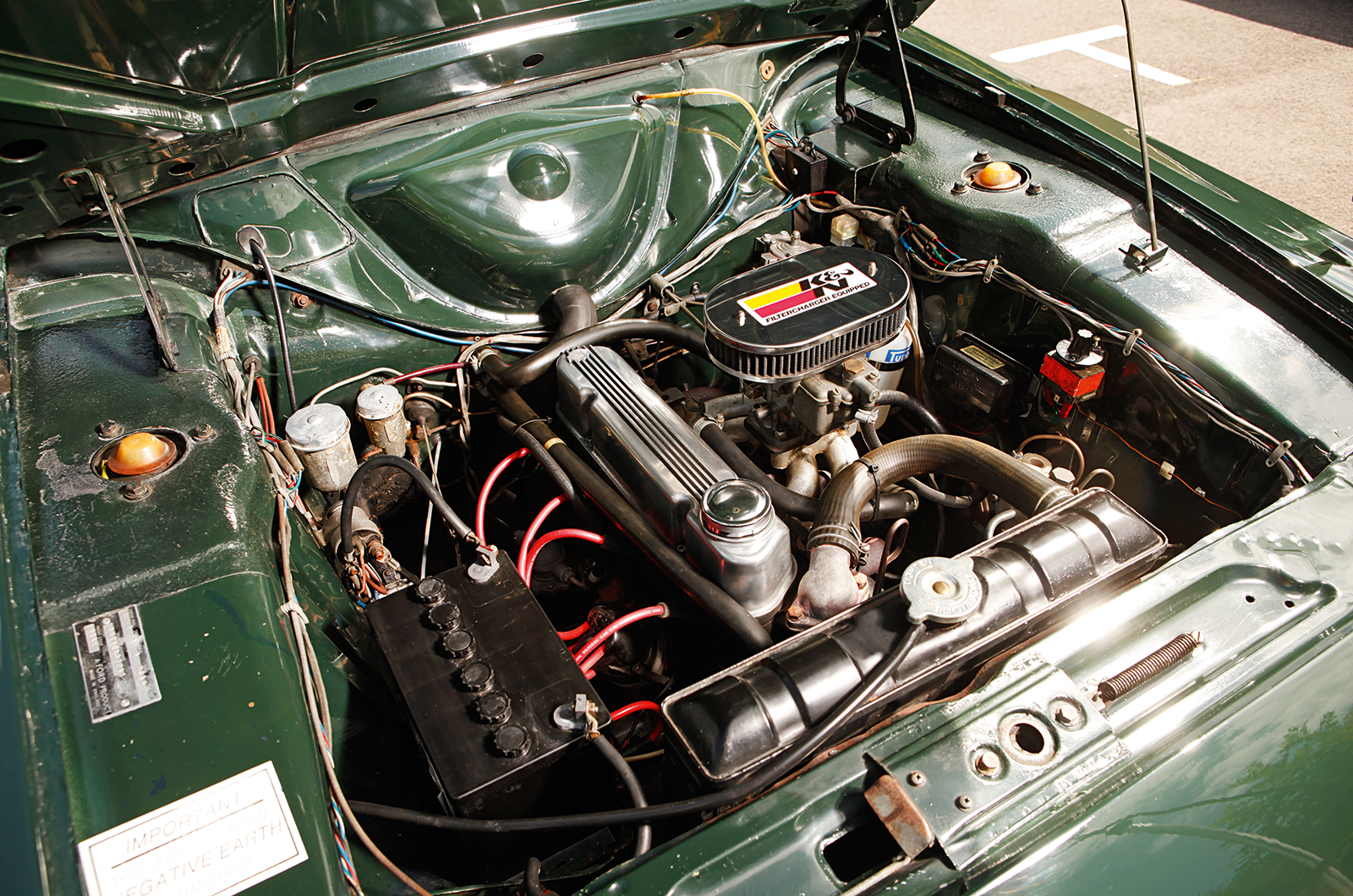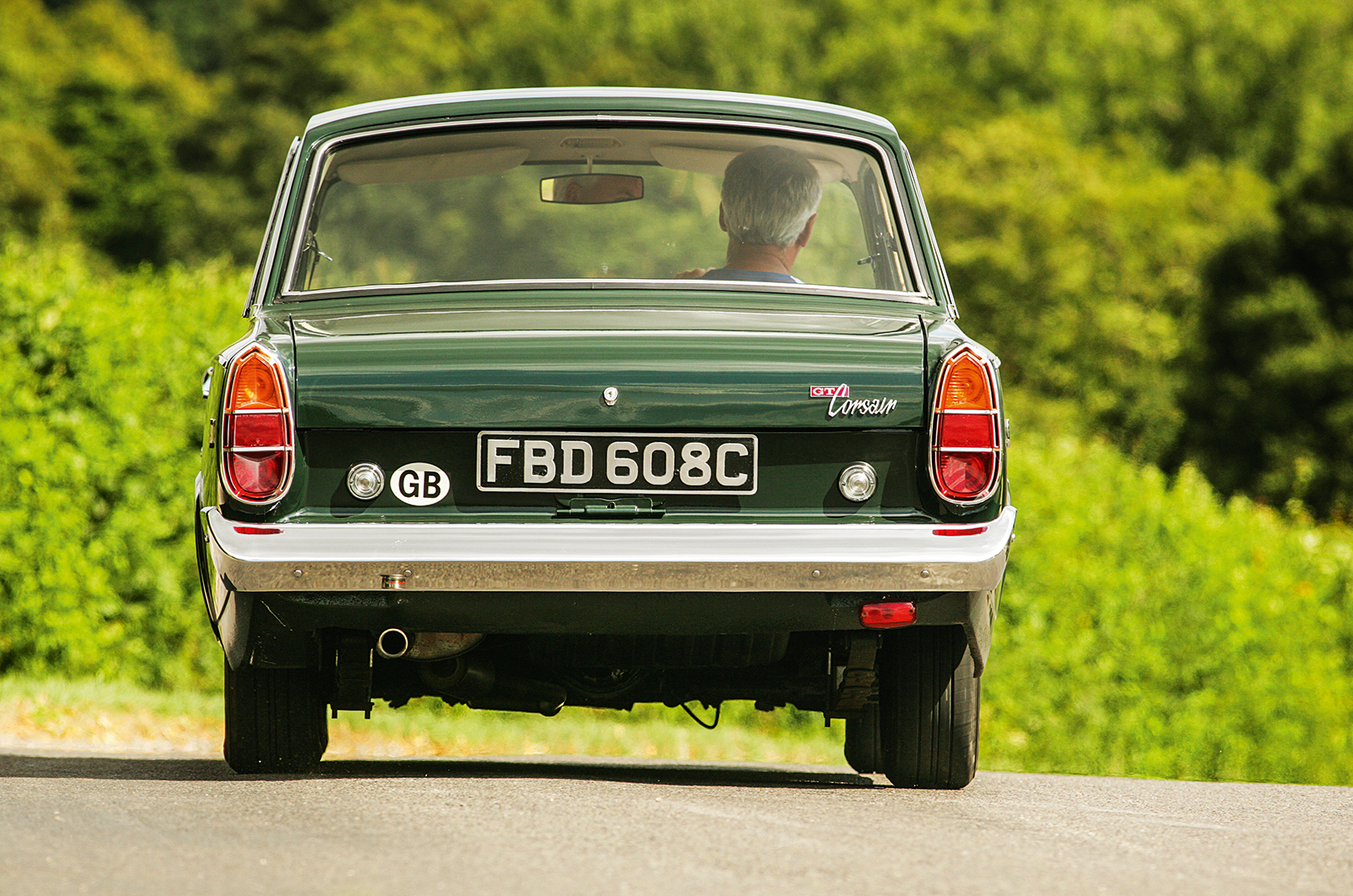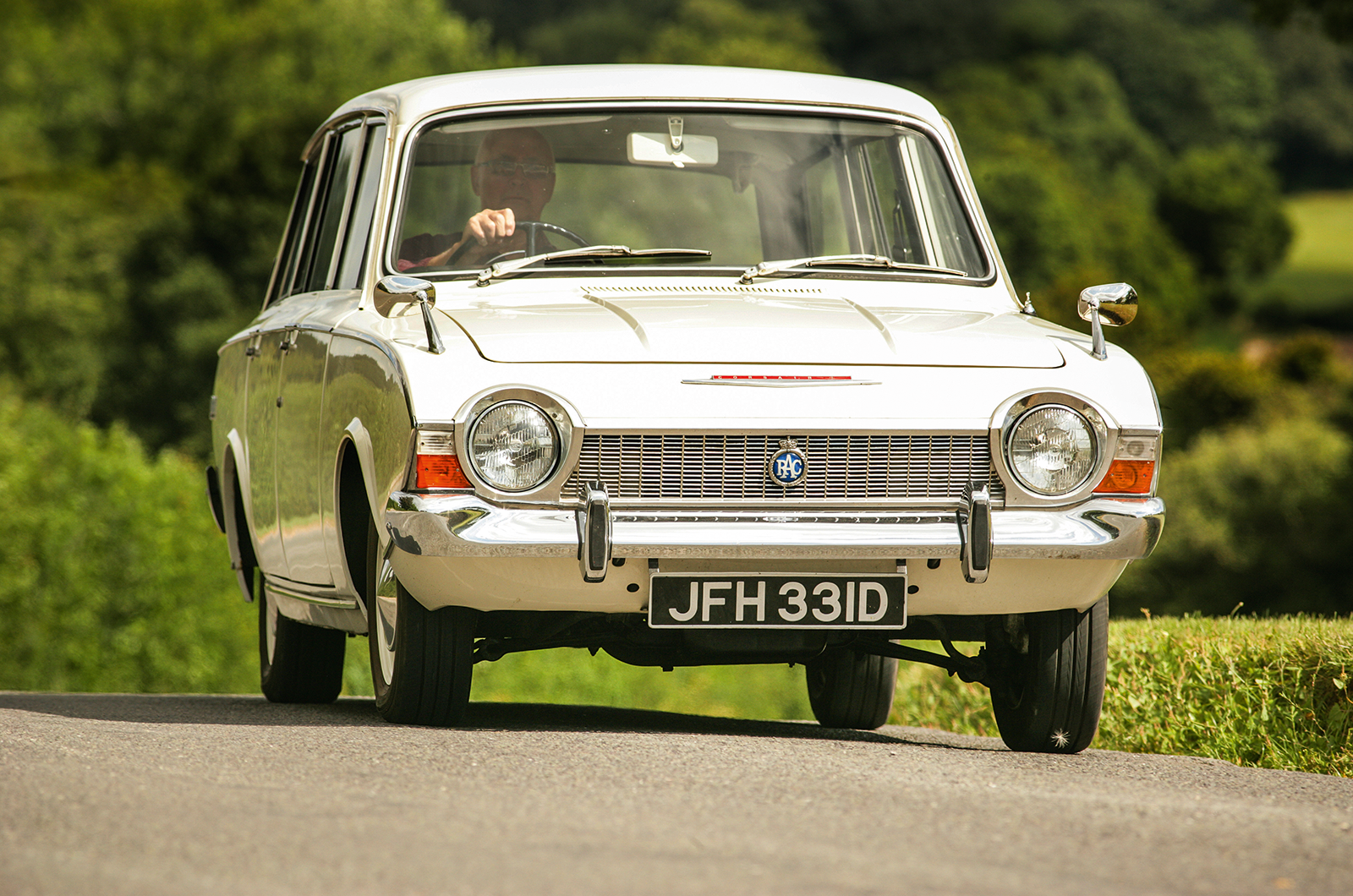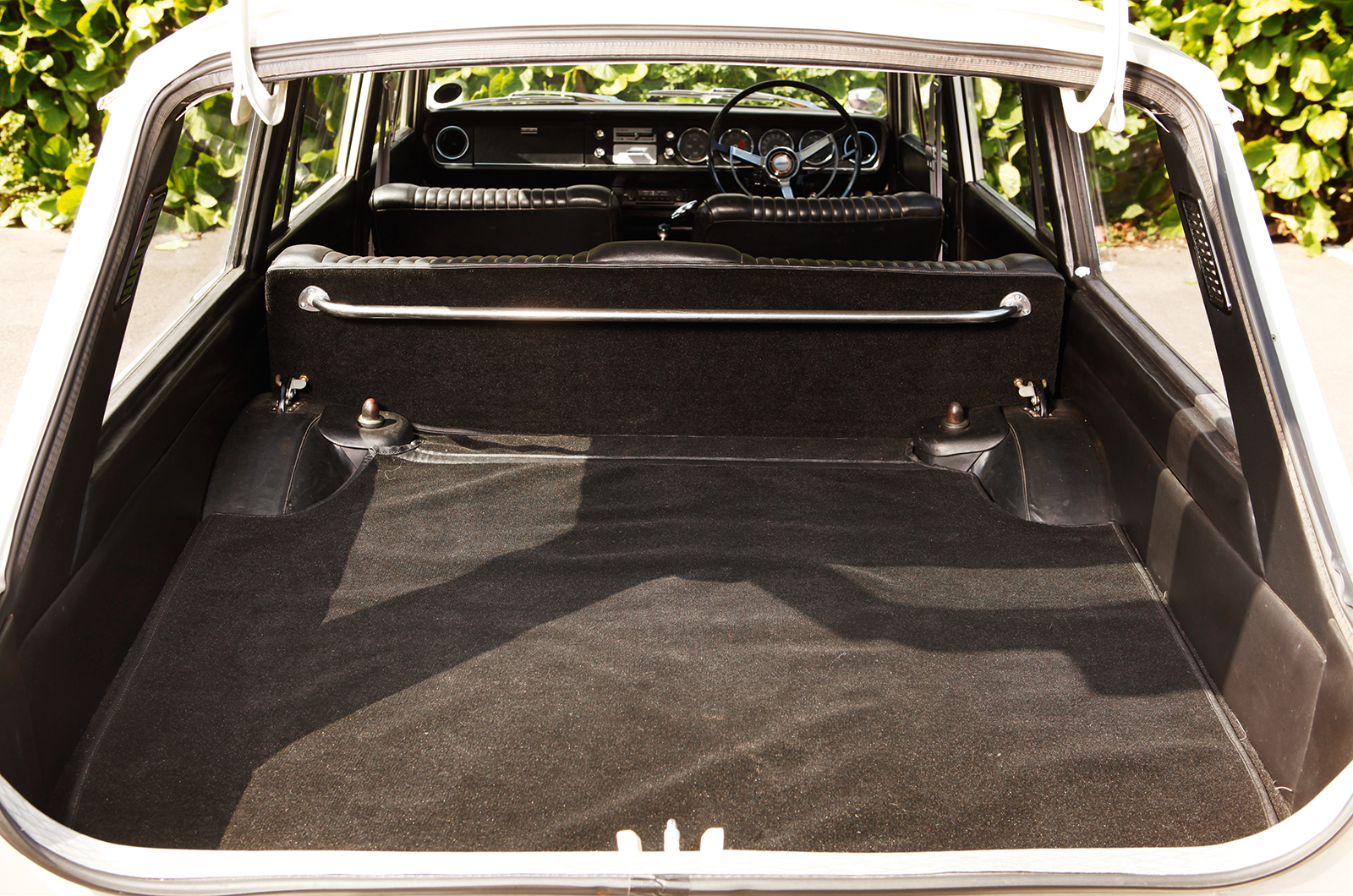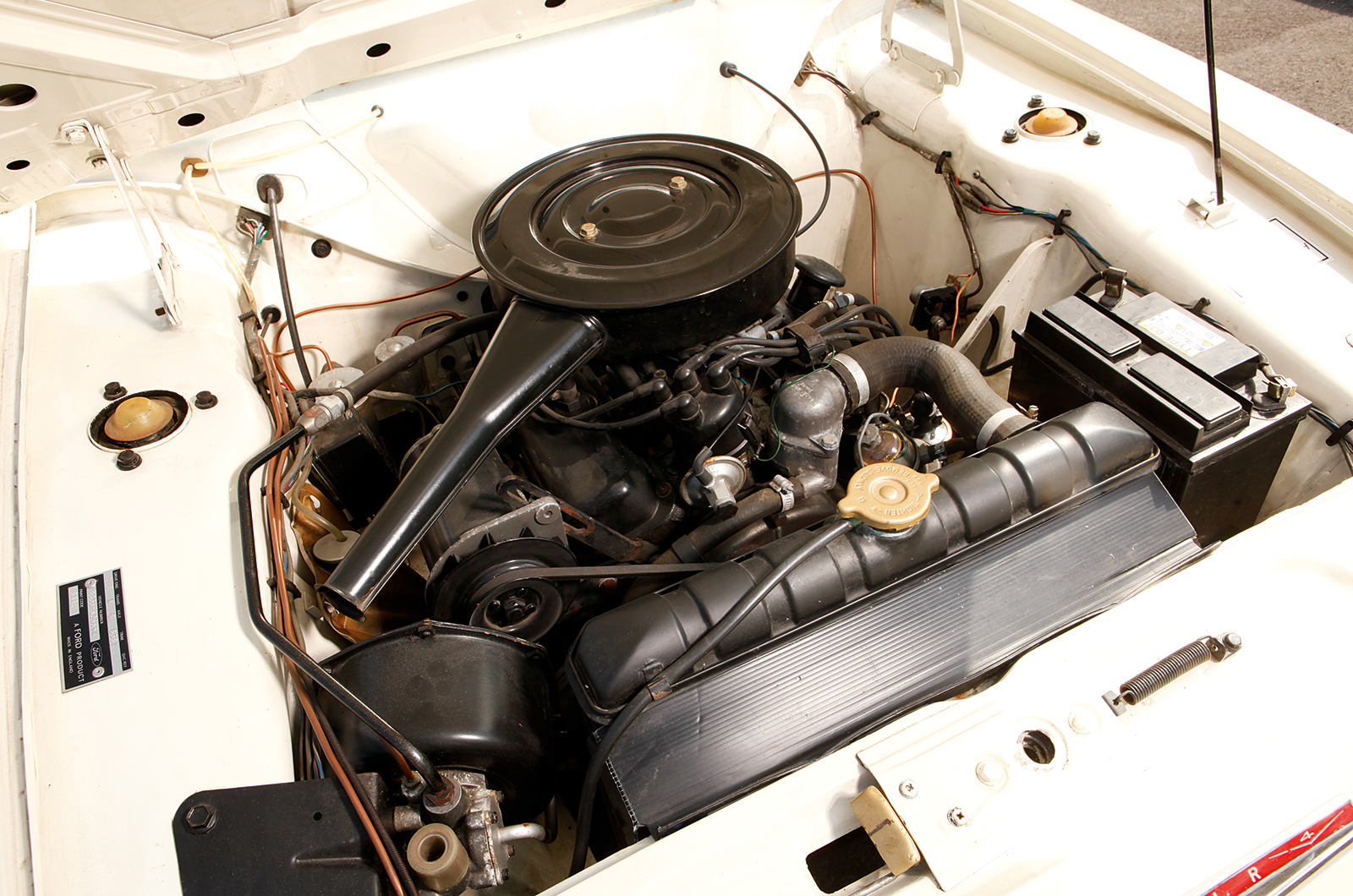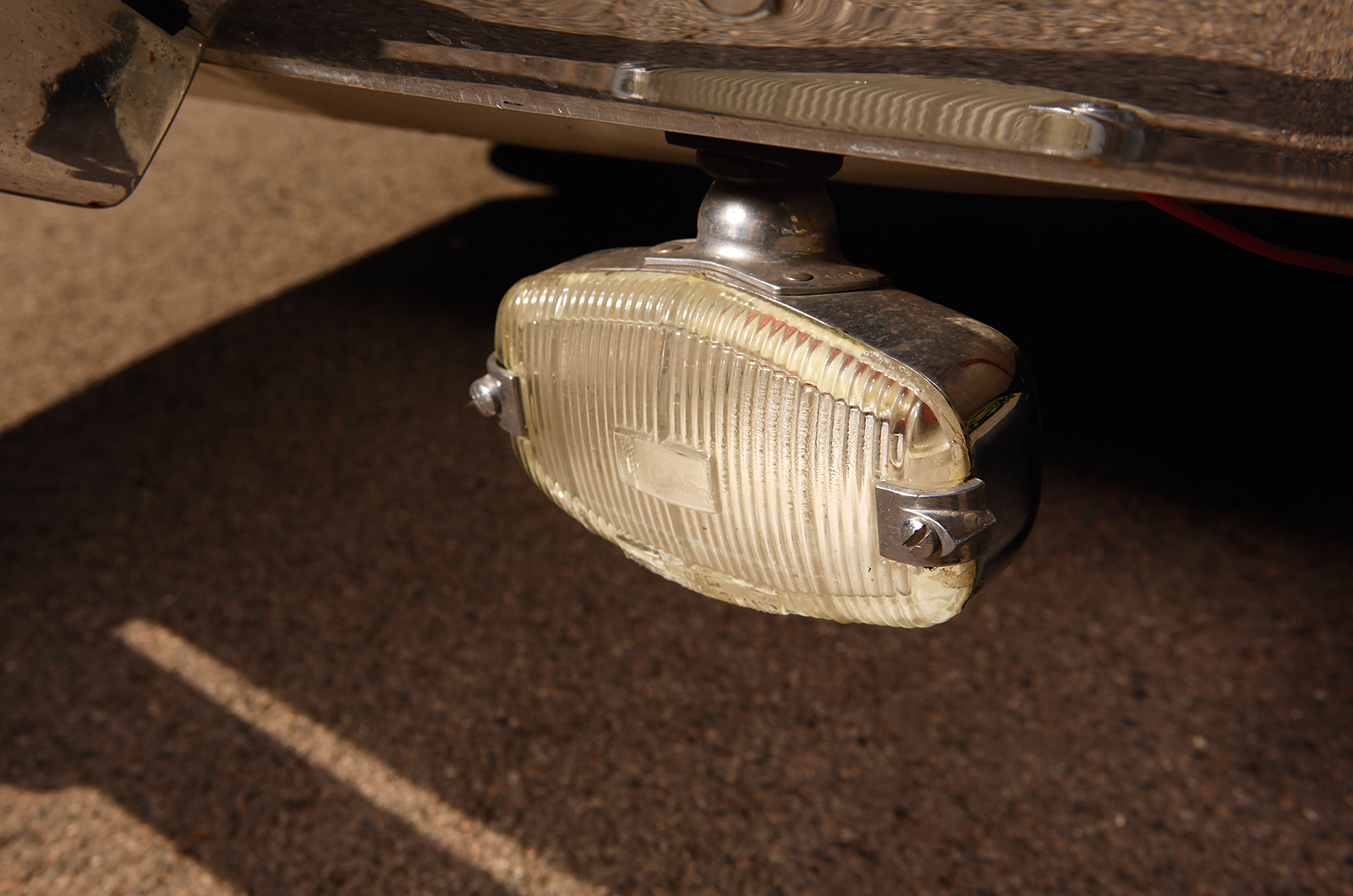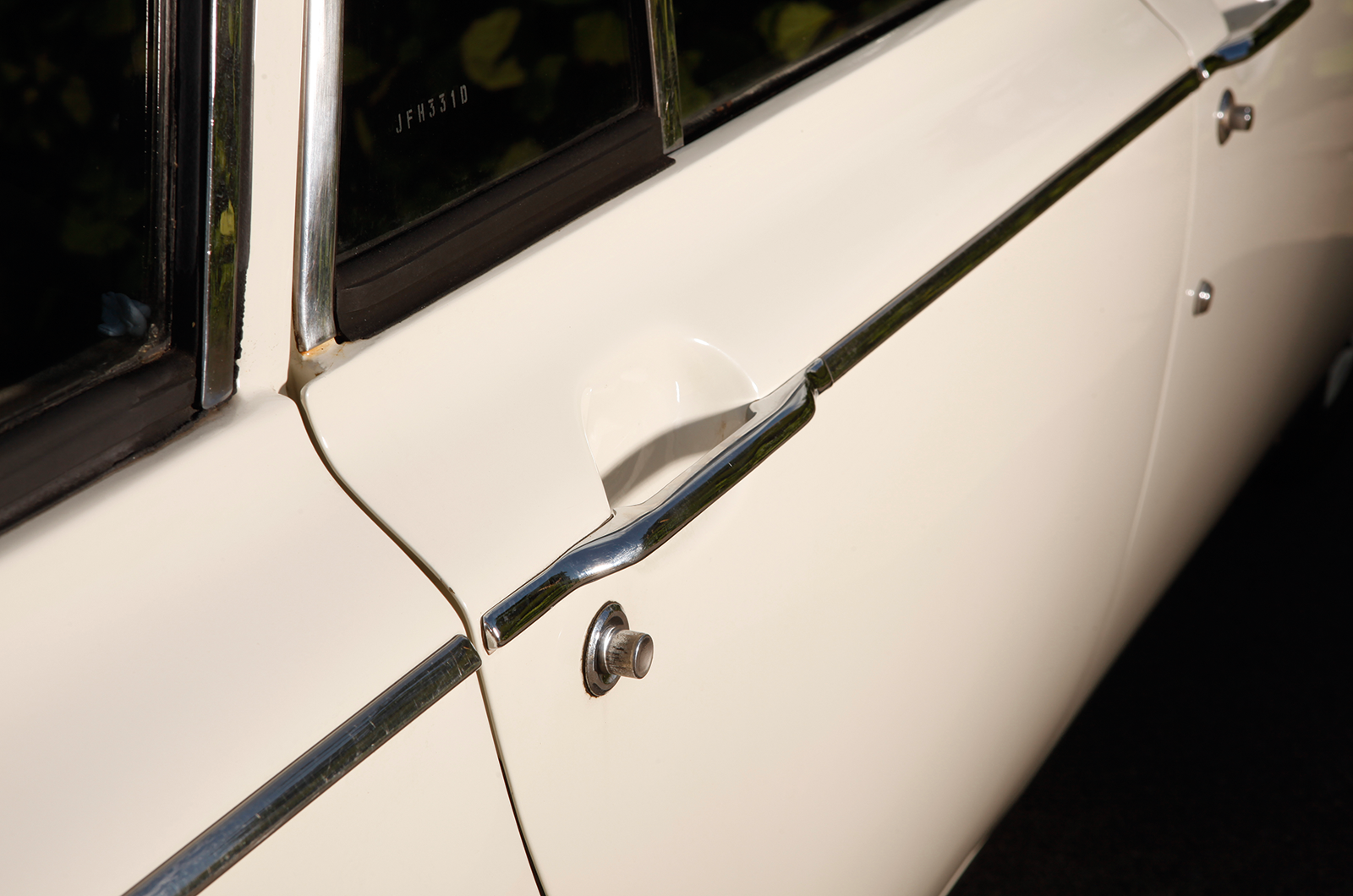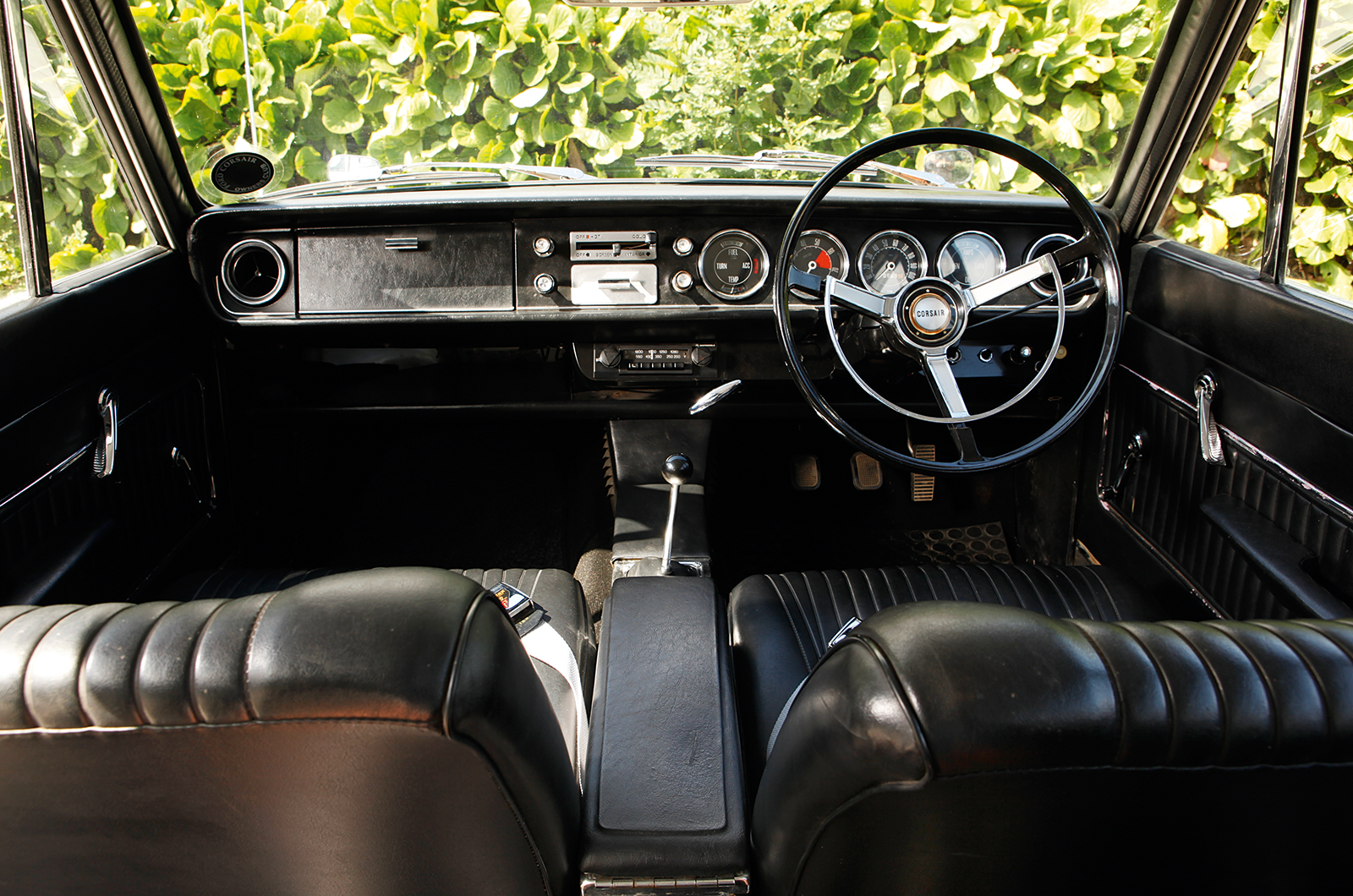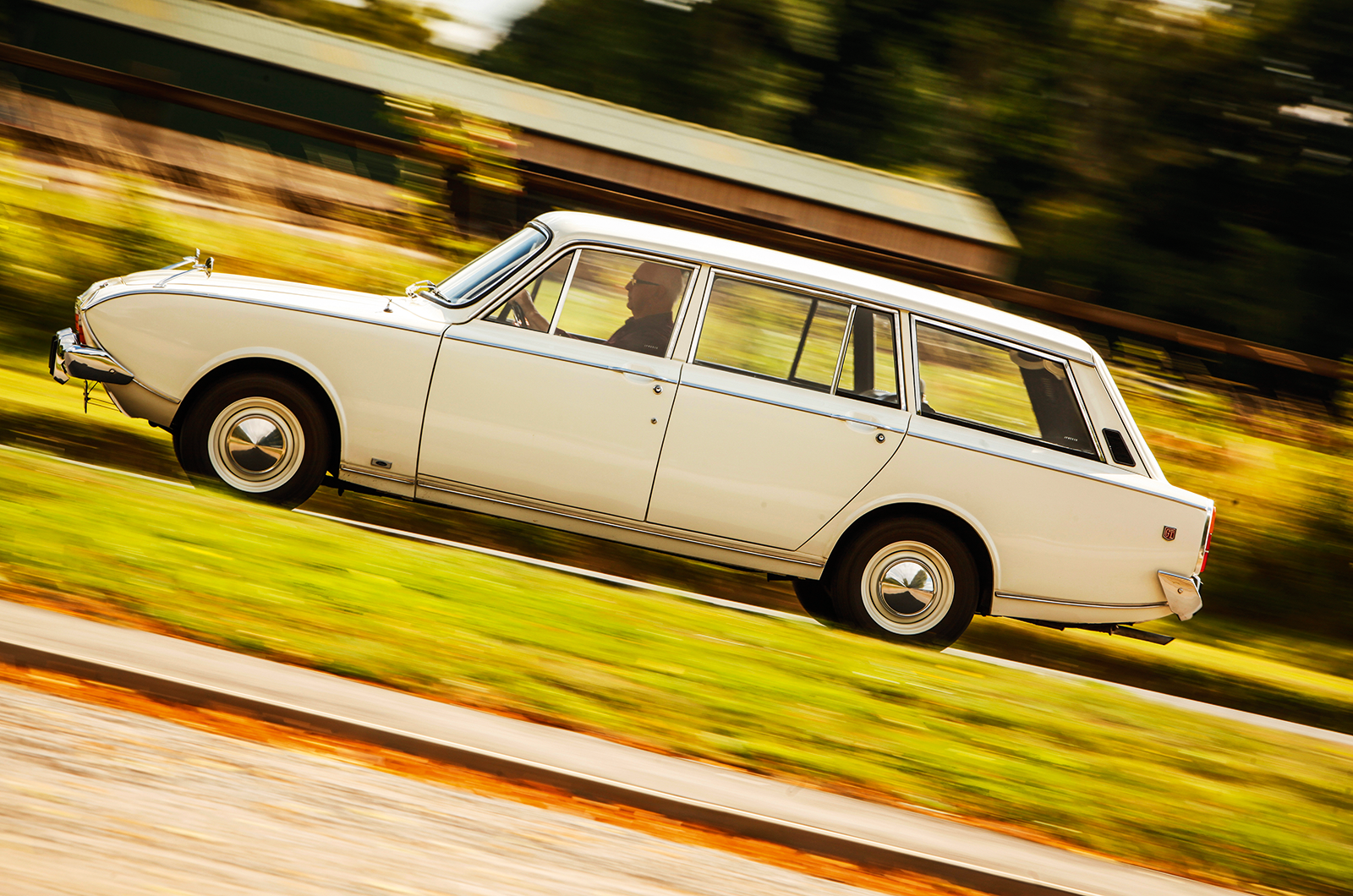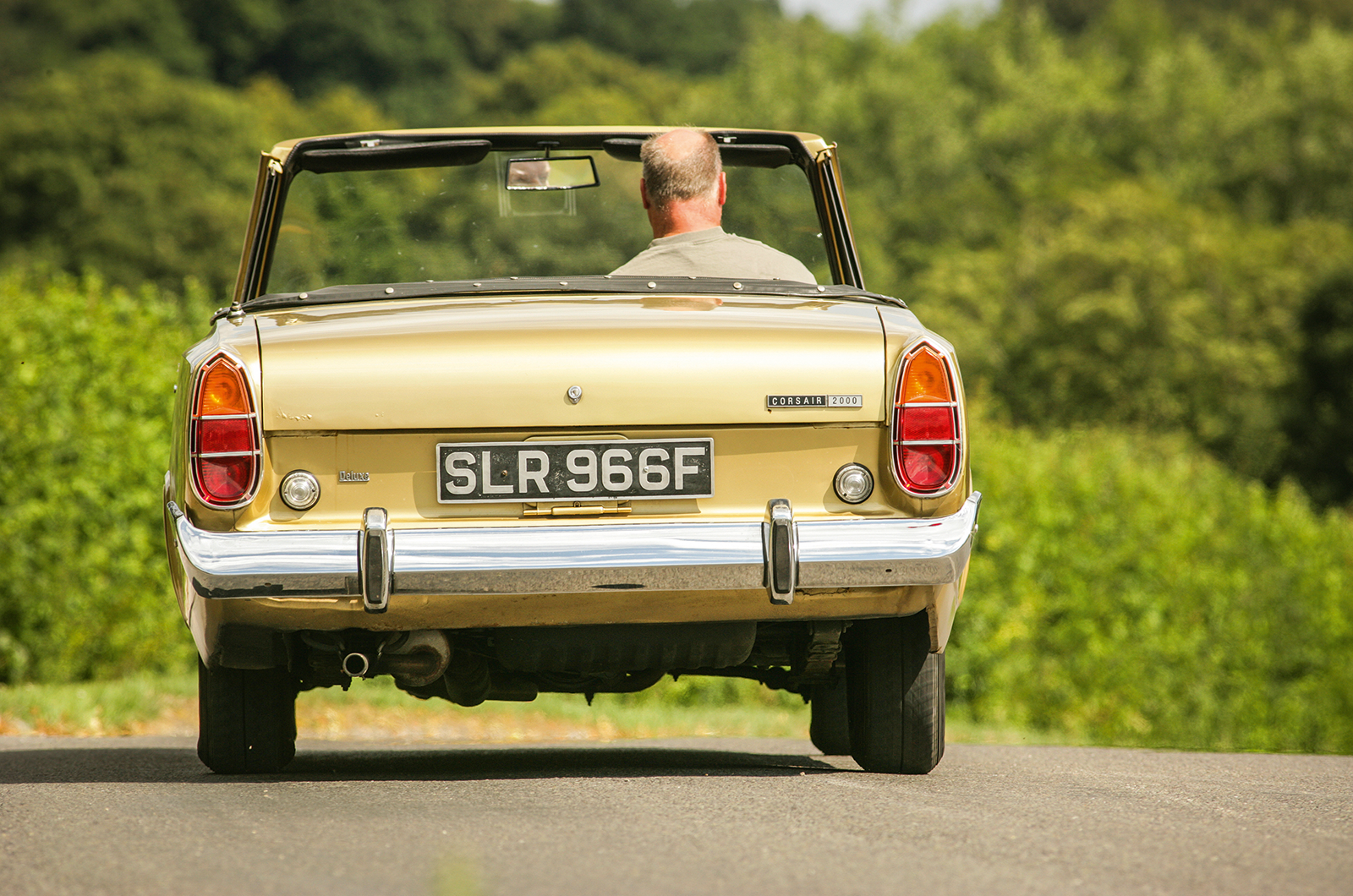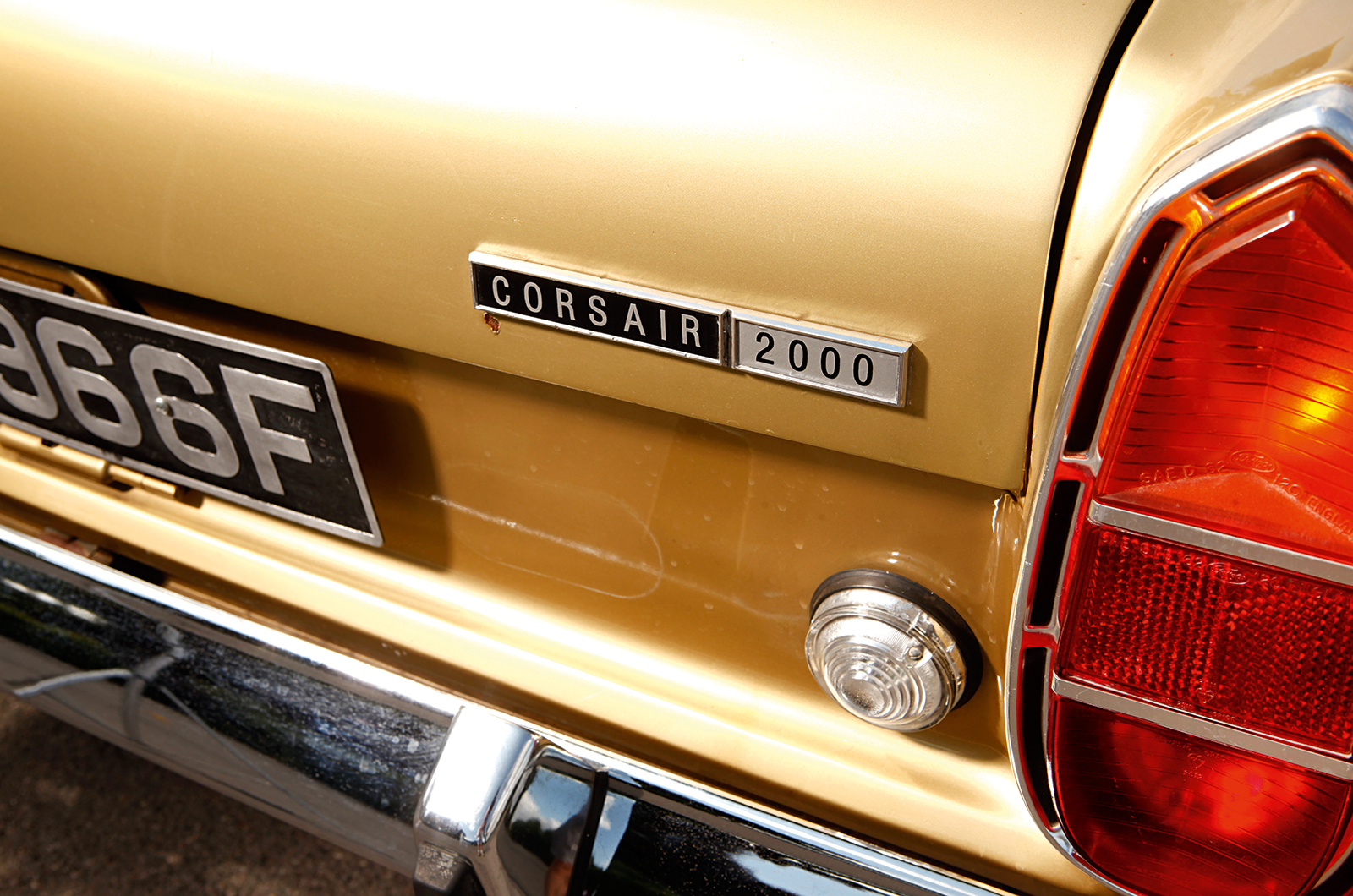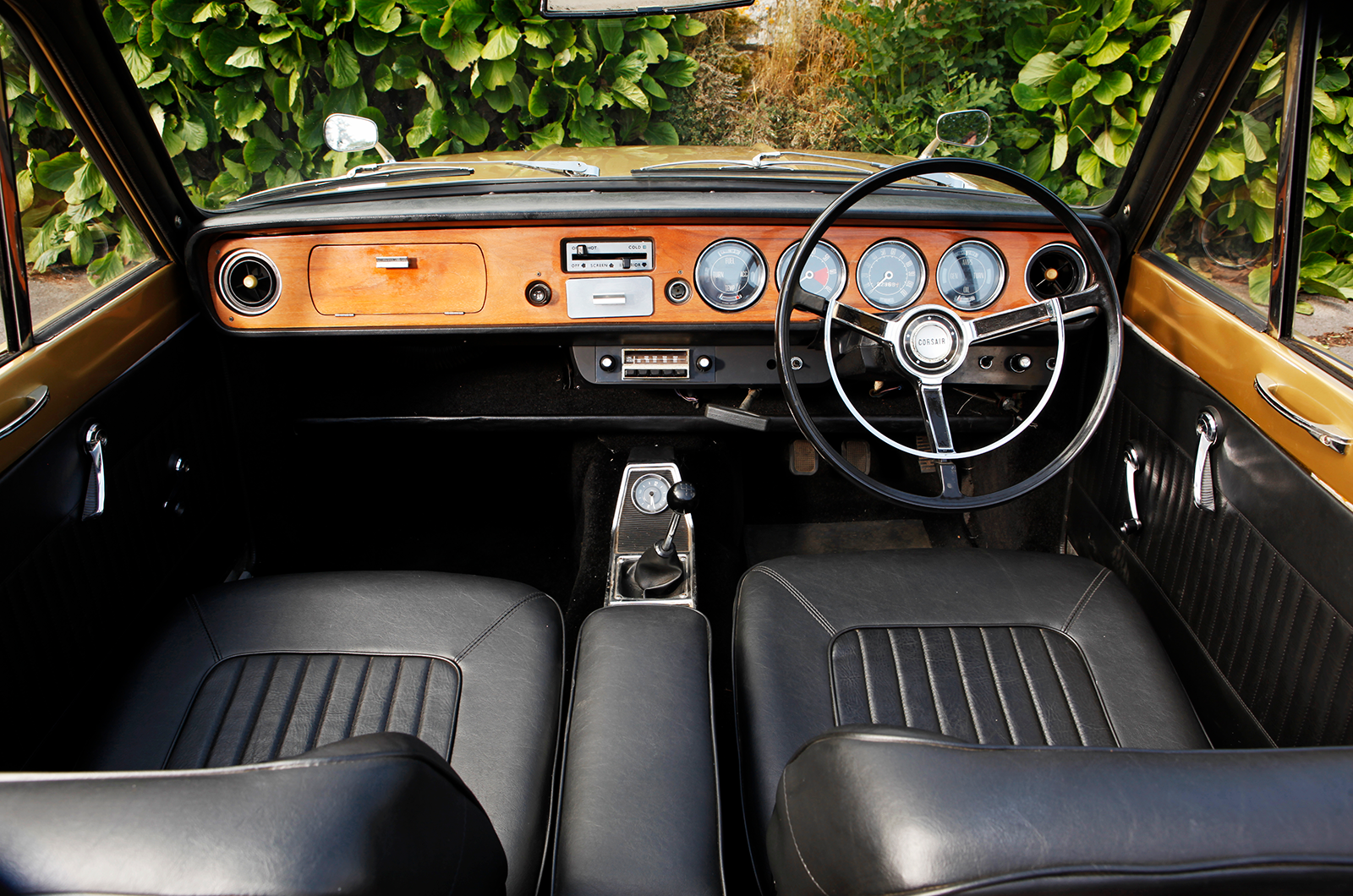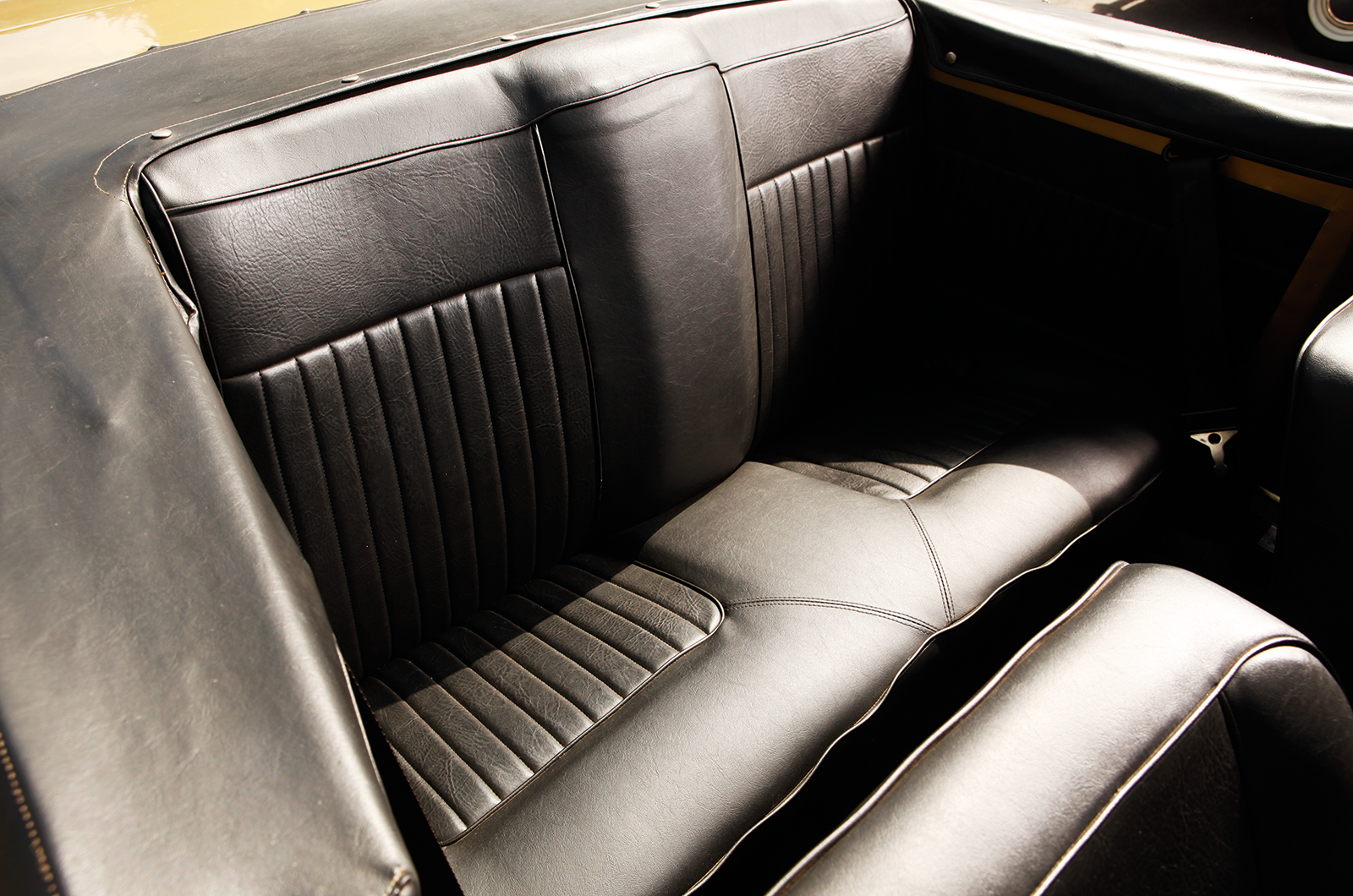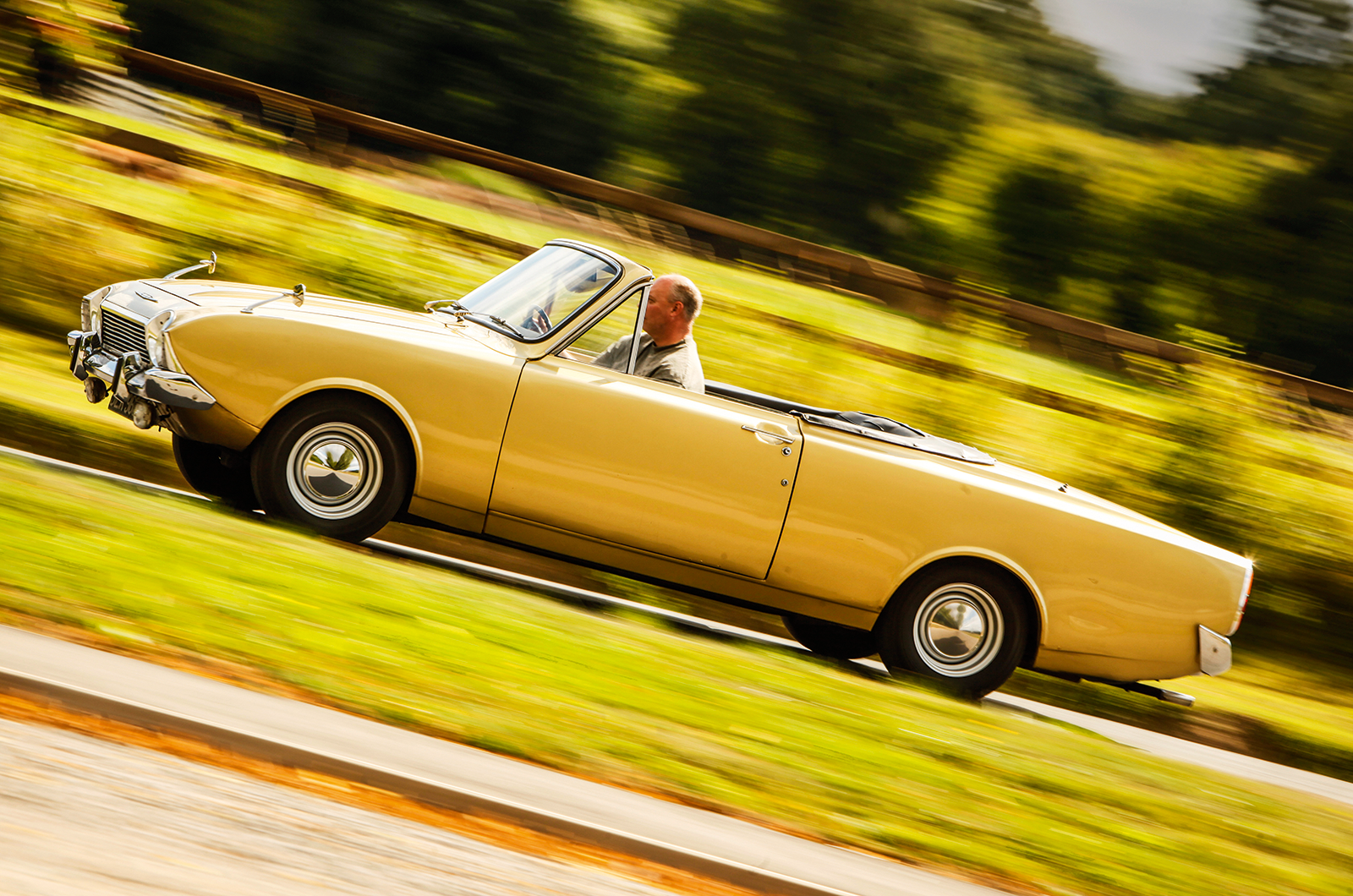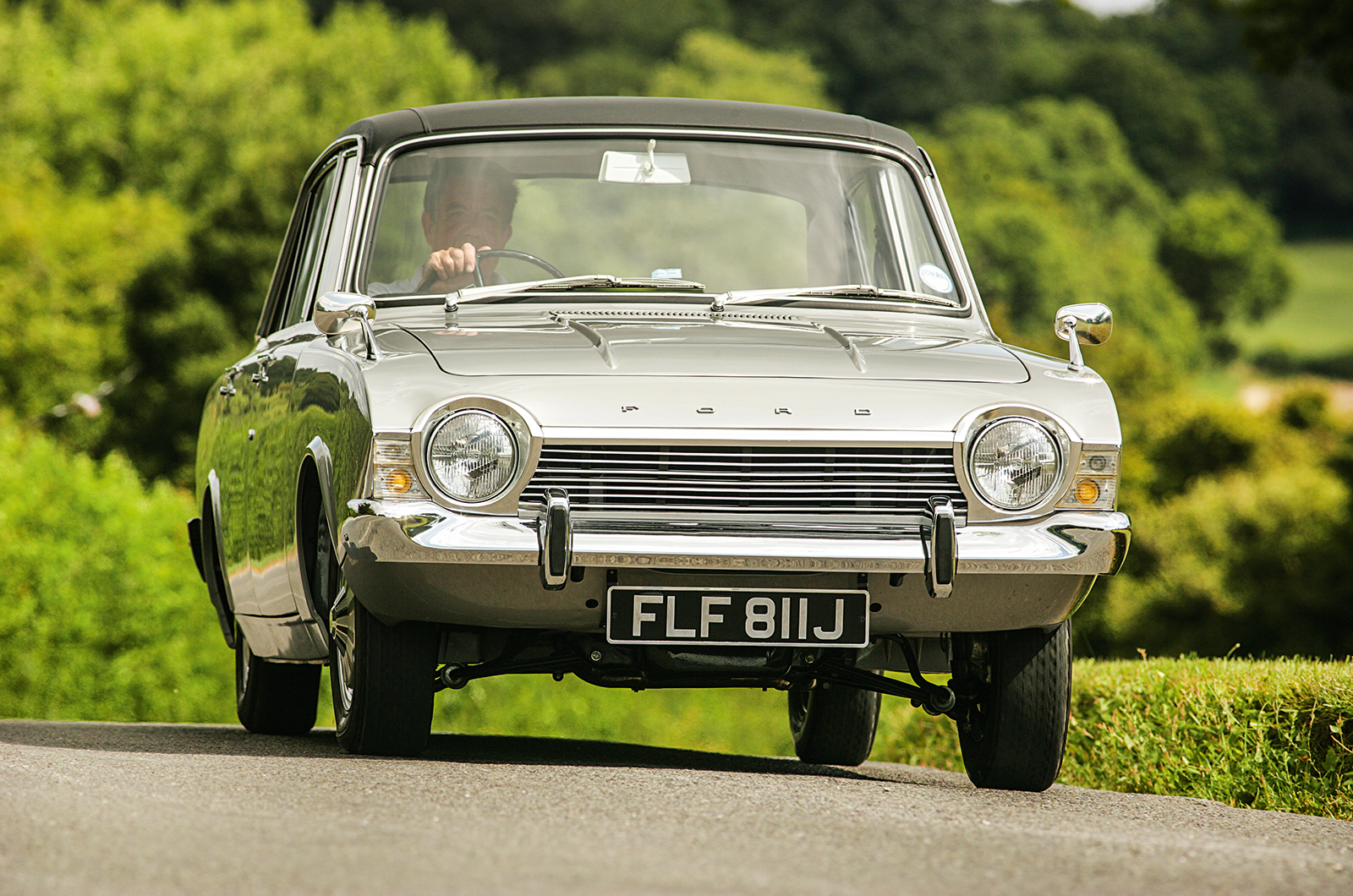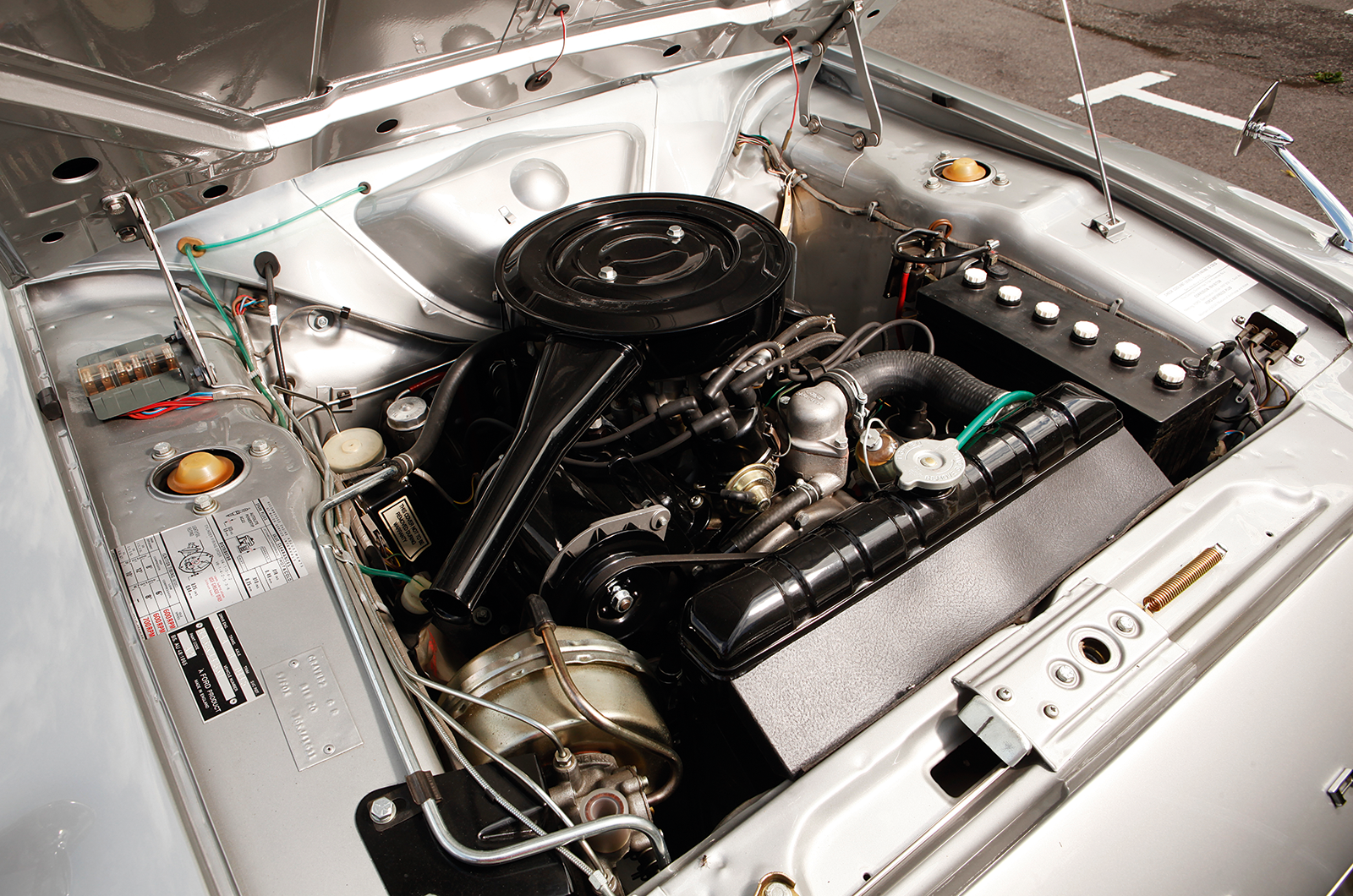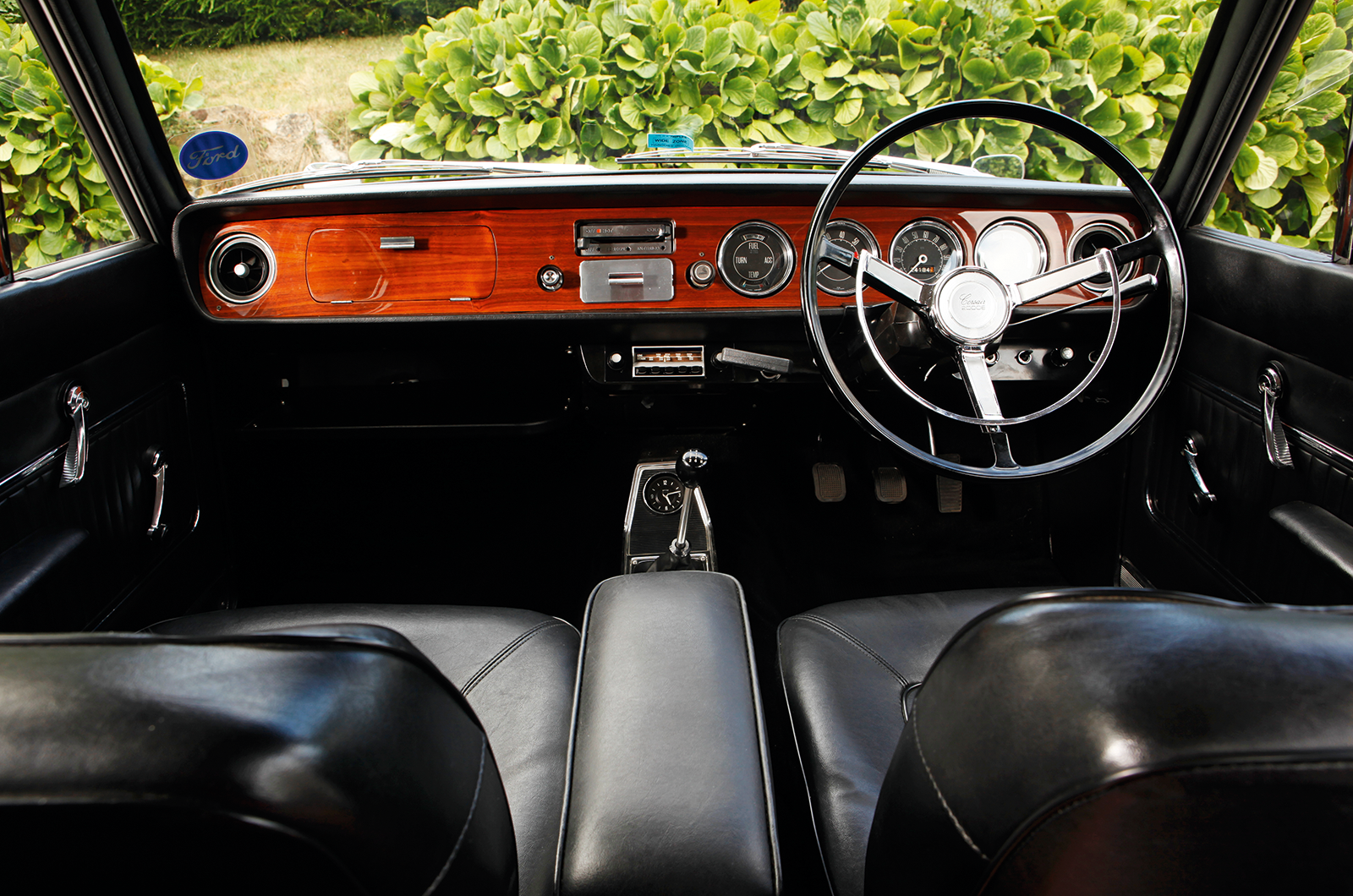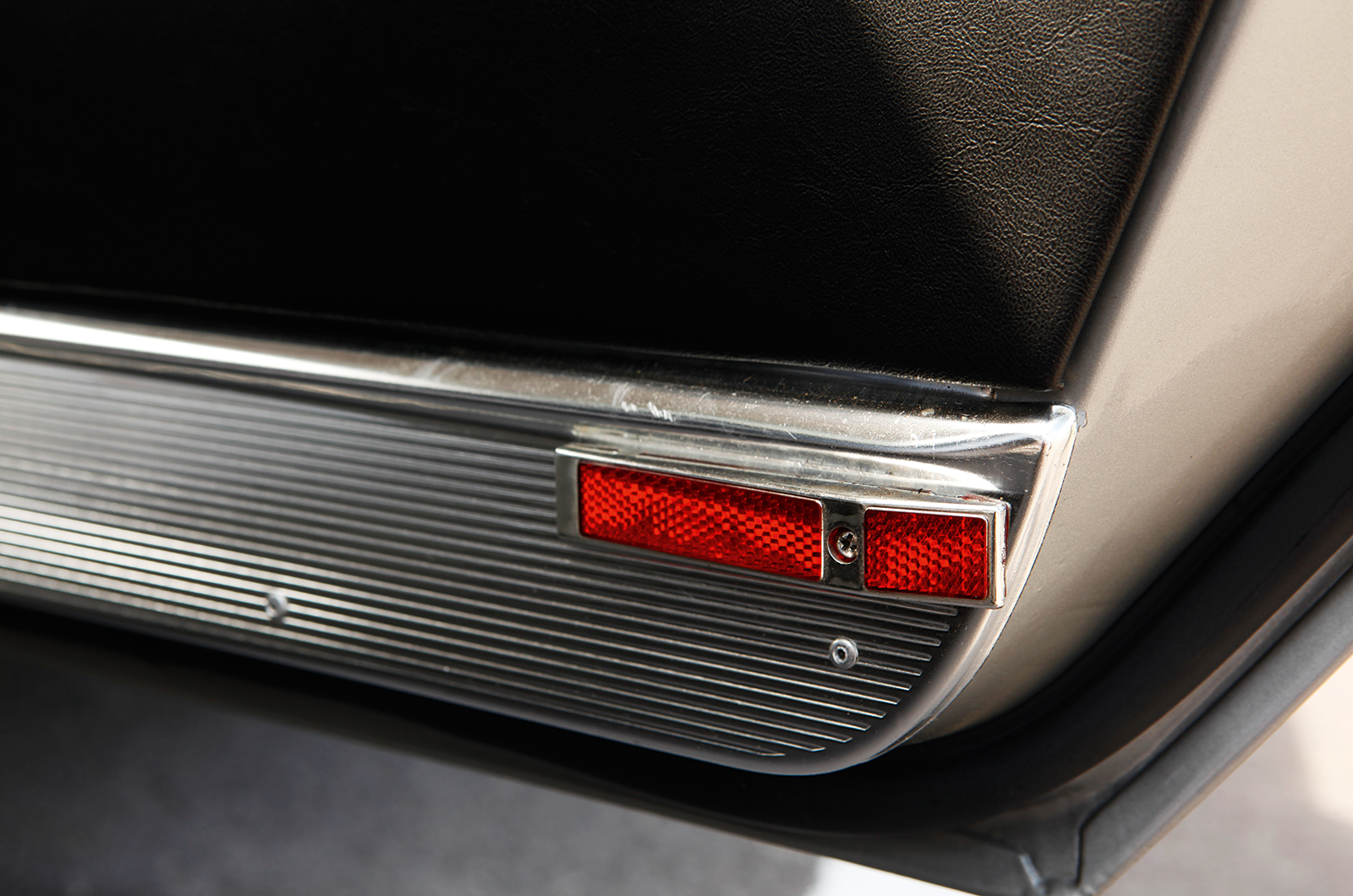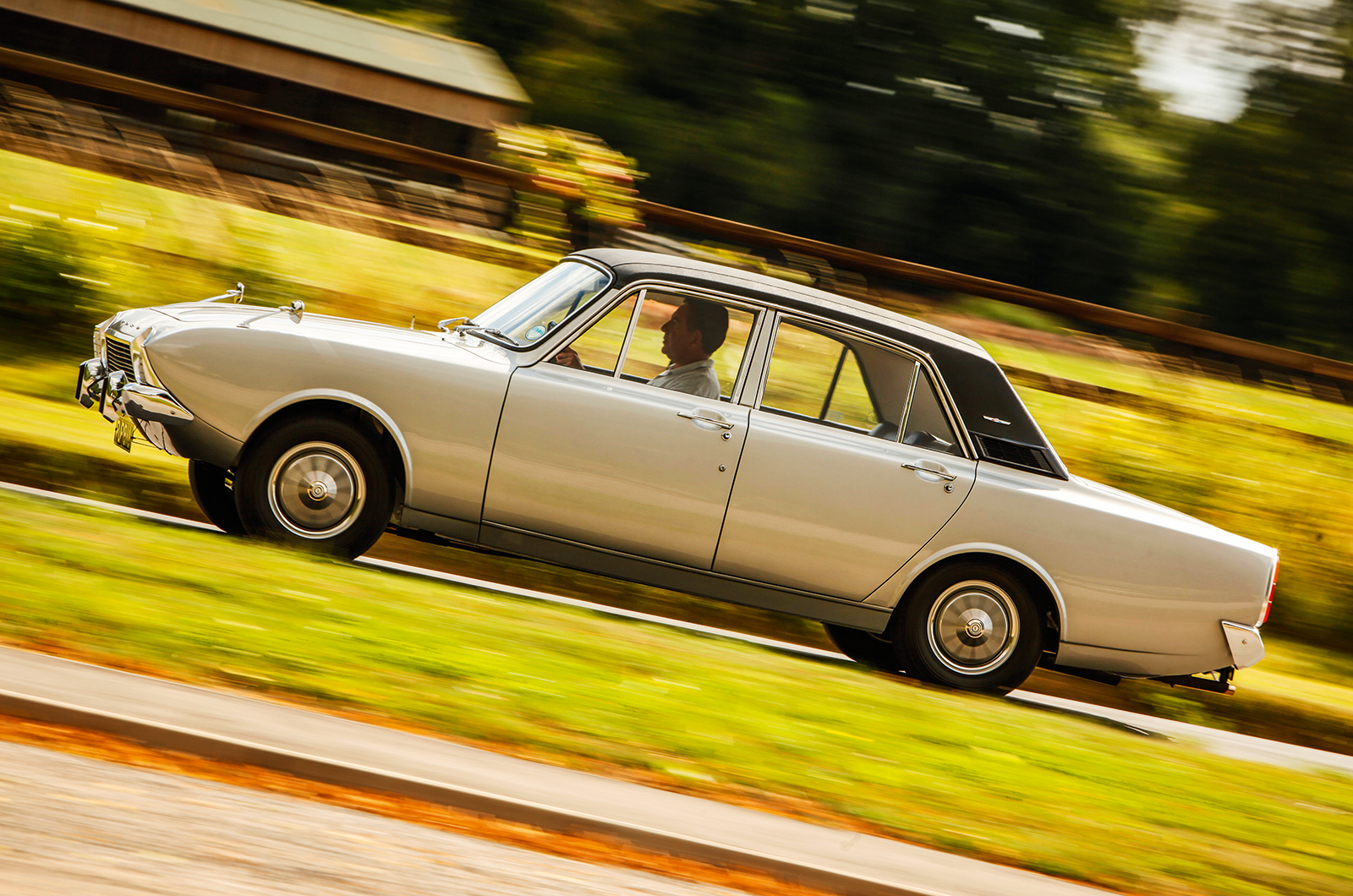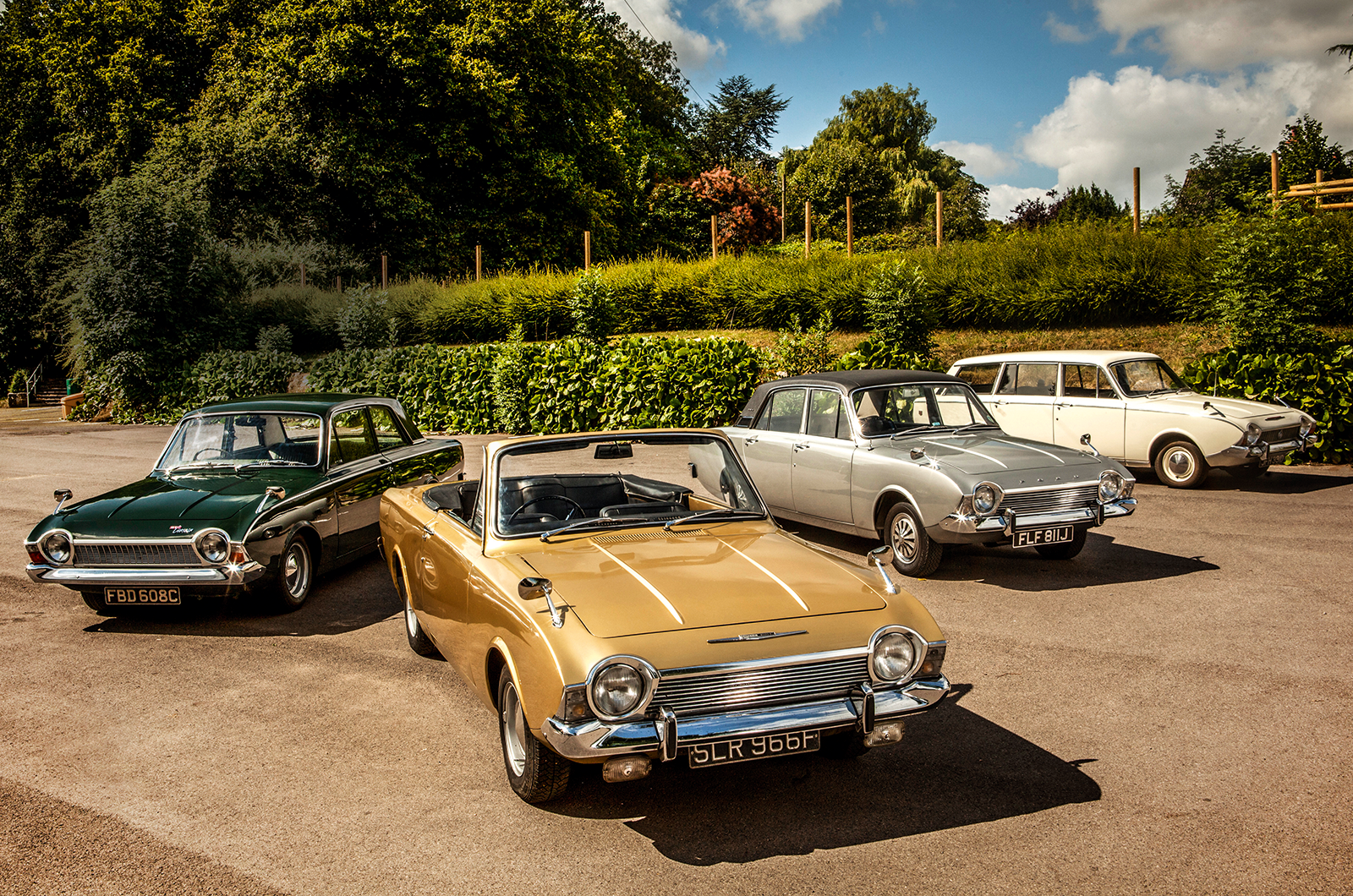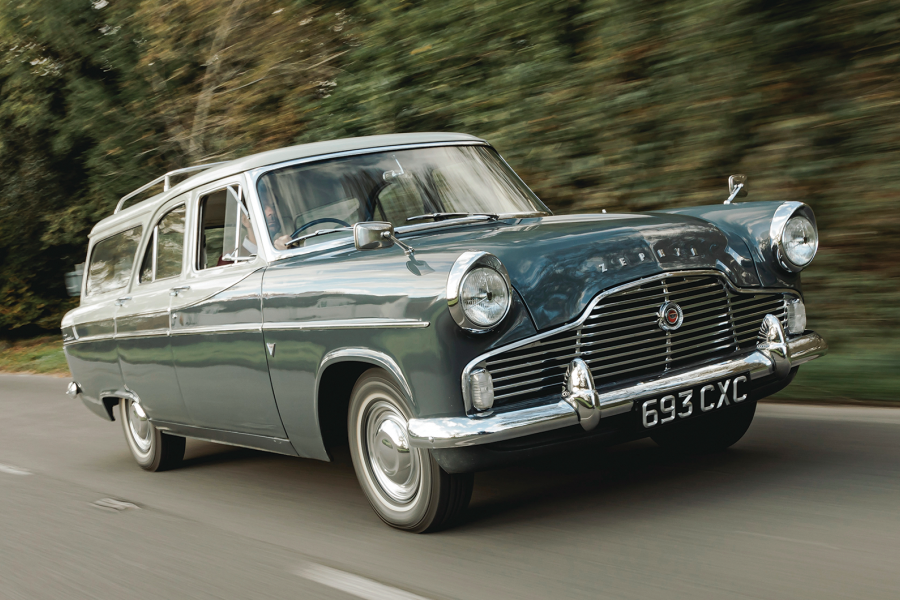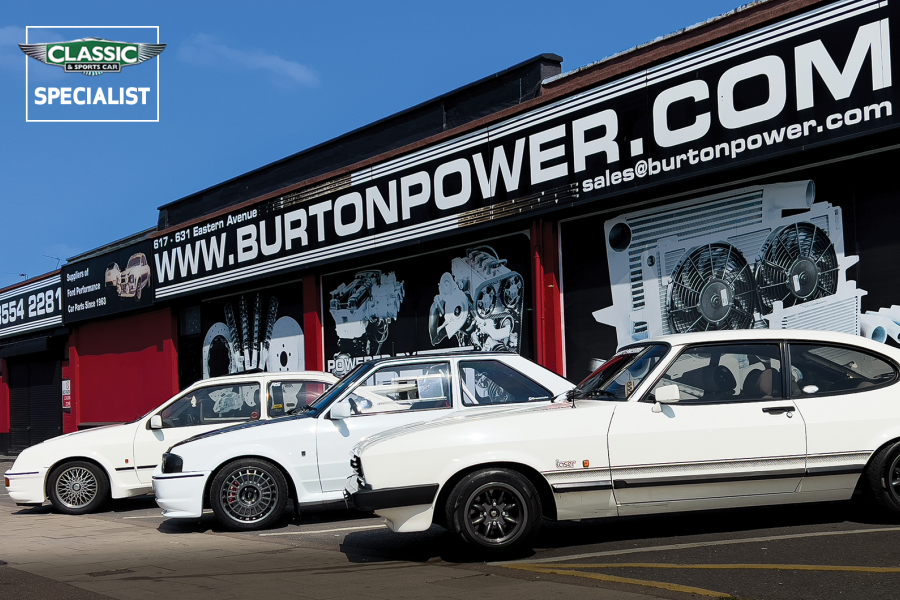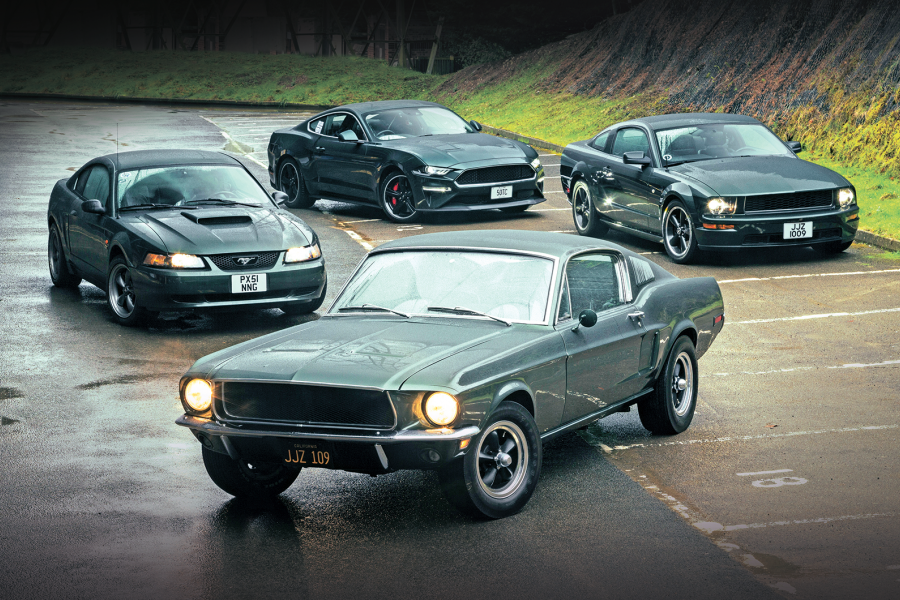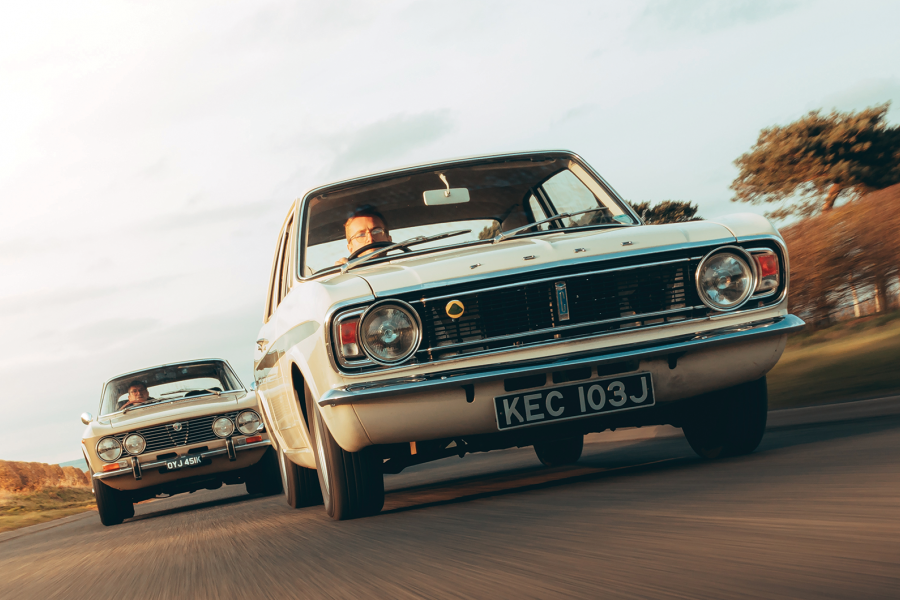At a price that undercut the Rover 2000 by more than £200, the new executive-class Corsair came with cut-pile carpeting, a clock, radial-ply tyres, a vinyl roof, a cigar lighter, a wood-veneer dashboard and, very unusually for 1967, a Medium Wave/Long Wave radio.
In order to appeal to the former MGB GT owner with family responsibilities, the 2000E was fitted with a twin-choke Weber in place of the Zenith carburettor of the early V4 2-litre.
Together with a higher-lift camshaft it gave enhanced performance, and the same excellent close-ratio gearbox as used on the Cortina II Lotus meant that this was a Corsair with genuine press-on potential.
The Ford Corsair 2000E’s V4 engine got twin-choke Webers
The standard equipment list was indeed lavish for the price, and as for the wheel trims, what was the point of owning a 2000E unless everyone was aware of your enhanced social status?
As with the estate and the 1500GT, the presence of an equivalent Cortina does call into question the 2000E’s raison d’être – the 1600E, launched in October 1967, offered much the same level of performance for £40 less.
But the Corsair’s appeal was completely different to that of the 1600E, for even more than half a century after its debut, our late-model test car still exudes complete and utter decadence.
The Ford Corsair 2000E’s cabin features luxuries such as a MW/LW radio (left); neat reflectors on the doors
The combination of chrome, roof covering and metallic paint serve to celebrate 1960s chintz at its zenith.
Compared to modern cars, Mike Roberts’ 2000E seems remarkably narrow, the Corsair reminding you of the sheer bulk of the average 21st-century family car, but it retains an air of consequence.
Corsair production transferred to Dagenham in 1969 prior to it being replaced by the Cortina Mk3 in late 1970, and the days when virtually every suburban street had to have a 2000E in faded red metallic have long vanished.
To understand the discreet charm of the Corsair, perhaps it is necessary to contrast it with its nearest BMC rival, the Austin 1800.
The hotter camshaft and close-ratio gearbox give the Ford Corsair 2000E sprightly performance
The Landcrab was technically advanced, incredibly capacious but to a 1964 driver offered an interior that was as luxurious as a YMCA in the Brecon Beacons.
The Corsair had no pretentions towards mechanical sophistication, but presented customers with coachwork and a cabin that appealed to their aspirations rather than to their inner masochist.
My favourite, therefore, has to be the 2000E – a chrome-encrusted reminder of a world when a dipping rear-view mirror was seen as a luxury feature.
Images: Tony Baker
This was first in our December 2013 magazine; all information was correct at the date of original publication
Factfiles
Ford Corsair 1500GT
- Sold/number built 1963-’65/21,857 (331,095 in total)
- Construction steel monocoque
- Engine all-iron, overhead-valve 1499cc ‘four’, Weber 28/36 DCD16/18 twin-choke carburettor
- Max power 78bhp @ 5200rpm
- Max torque 91lb ft @ 3600rpm
- Transmission four-speed manual, RWD
- Suspension: front independent, by MacPherson struts, anti-roll bar rear live axle, semi-elliptic leaf springs, telescopic dampers
- Steering Burman recirculating ball
- Brakes 9½in (241mm) discs front, 8in (203mm) drums rear, with servo
- Length 14ft 8¾in (4489mm)
- Width 4ft 10in (1473mm)
- Height 5ft 6in (1676mm)
- Wheelbase 8ft 5in (2565mm)
- Weight 2033lb (922kg)
- Mpg 26
- 0-60mph 12.8 secs
- Top speed 92mph
- Price new £816 3s 9d
Corsair 2000GT Estate
(where different to 1500GT)
- Sold/number built 1965-’69/940
- Engine all-iron, overhead-valve 1996cc V4, Zenith 36IV carburettor
- Max power 88bhp @ 4750rpm
- Max torque 117lb ft @ 3600rpm
- Weight 2315lb (1050kg)
- Mpg 22.4
- 0-60mph 14.7 secs
- Top speed 91mph
- Price new £1149 5s 5d
Corsair Cabriolet
(where different to 2000GT estate)
- Sold/number built 1966/19
- Weight 1953lb (886kg)
- Price new £1500
Corsair 2000E
(where different to 2000GT estate)
- Sold/number built 1967-’70/31,566 (saloons)
- Engine Weber 32DIF4 twin-choke carburettor
- Max power 97bhp @ 5000rpm
- Max torque 113lb ft @ 3000rpm
- Weight 2363lb (1072kg)
- Mpg 24.8
- 0-60mph 11.4 secs
- Top speed 98mph
- Price new £1107 18s 4d
Enjoy more of the world’s best classic car content every month when you subscribe to C&SC – get our latest deals here
READ MORE
Ford Cortina at 60: celebrating a family favourite
Ford Capri 2.8 injection vs Renault Fuego Turbo vs Lancia HPE Volumex: a question of aspiration
Perks of the job: Ford Cortina 1600E vs Renault 16TS vs Fiat 125S
Andrew Roberts
Andrew is a long-time contributor to Classic & Sports Car
